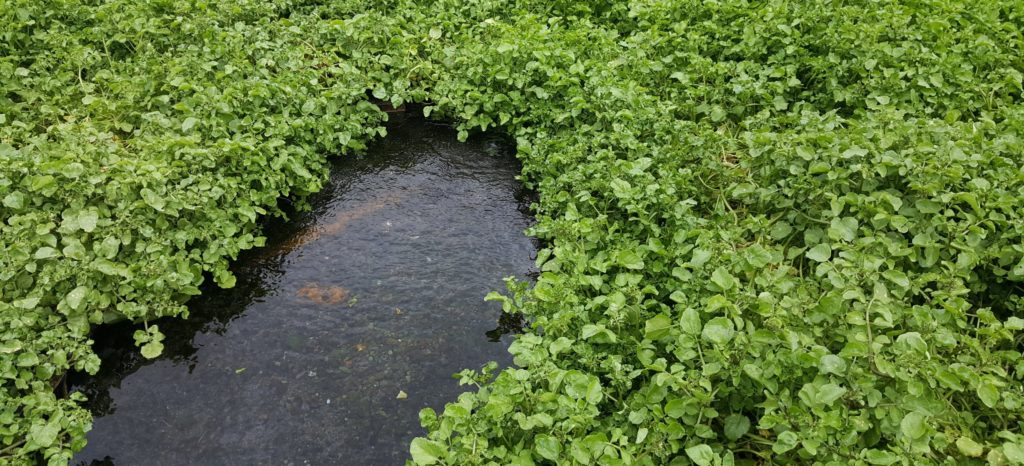Once a preferred swimming pool of Hawaiian ali‘i, the Kalauao Spring on the island of O‘ahu today continues to supply millions of gallons of clean, fresh water to the Pearl Harbor region. But changes to the environment, climate and continued development of the surrounding areas has put into question its sustainability. A unique partnership between the multigenerational Sumida Farm family and researchers from the University of Hawai‘i at Mānoa (UH Mānoa) is using novel methods to study the past, present and future of this fragile resource.
Since 1928 when Makiyo and Moriichi Sumida started watercress farming near Kalauao Spring, the Pearl Harbor area has transitioned from small family farms, to plantation agriculture, to today’s densely urban landscape that includes the Pearl Ridge Shopping Center, military installations, condominiums, strip malls and now, the Honolulu Rail Transit system. Throughout these changes, the Sumidas’ 11 acres of bright green watercress fields have been cultivated in much the same way as they were more than 90 years ago—hand-planted, hand-harvested, and hand-washed to weekly produce four to five tons of the nutritious traditional crop that O‘ahu’s families and chefs have loved for generations. Sumida Farm supplies 70 percent of the state’s watercress, and is one of only a handful of watercress farms remaining in Hawai‘i.
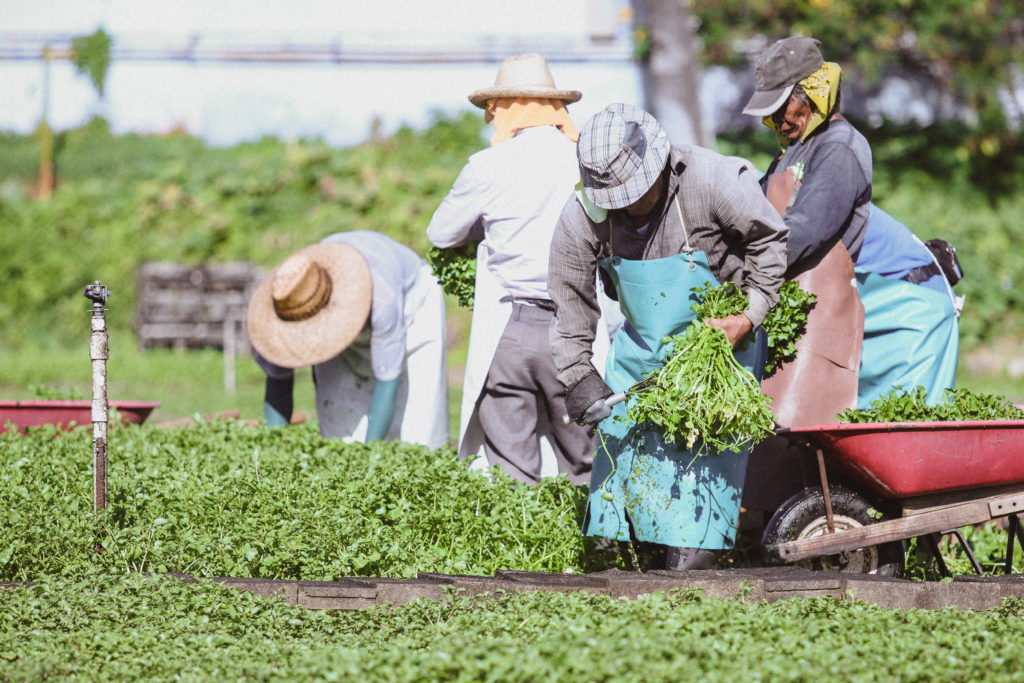
In 2017, the Sumida family began to collaborate with members of UH Mānoa’s ‘Ike Wai research group to investigate changes they were observing in their crops. Third-generation siblings Barbara and David Sumida had been running the farm for decades, and had seen their share of challenges, including invasions of the diamondback moth and aster yellows disease. But now, they were starting to wonder about the clean fresh spring water that was the source of their livelihood. Was it experiencing pollution from the surrounding urban development? Were the springs getting saltier from sea level rise? And why were the crops dying off during the hottest summer months?
Funding secured by Hawai‘i Institute of Geophysics and Planetology affiliate Jennifer Engels from an Active Societal Participation in Research and Education (ASPIRE) grant, and ‘Ike Wai, allowed a multi-disciplinary team of UH Mānoa researchers to work side by side with the Sumida family to discover the past, present and future sustainability of their water resource using a mixed-methods approach.
“This deep dive into the history of the farm uncovered some very surprising insights,” said Engels. “The close partnership between the UH Mānoa team and the Sumidas resulted in a great synergy of ideas and information that would never have been possible without their generational accounts of lived experiences on the farm.”
In 2017, the Sumida family began to collaborate with members of UH Mānoa’s ‘Ike Wai research group to investigate changes they were observing in their crops. Third-generation siblings Barbara and David Sumida had been running the farm for decades, and had seen their share of challenges, including invasions of the diamondback moth and aster yellows disease. But now, they were starting to wonder about the clean fresh spring water that was the source of their livelihood. Was it experiencing pollution from the surrounding urban development? Were the springs getting saltier from sea level rise? And why were the crops dying off during the hottest summer months?
Funding secured by Hawai‘i Institute of Geophysics and Planetology affiliate Jennifer Engels from an Active Societal Participation in Research and Education (ASPIRE) grant, and ‘Ike Wai, allowed a multi-disciplinary team of UH Mānoa researchers to work side by side with the Sumida family to discover the past, present and future sustainability of their water resource using a mixed-methods approach.
“This deep dive into the history of the farm uncovered some very surprising insights,” said Engels. “The close partnership between the UH Mānoa team and the Sumidas resulted in a great synergy of ideas and information that would never have been possible without their generational accounts of lived experiences on the farm.”
Barbara Sumida kept detailed hand-written records of watercress yields over the years —bundles harvested, sales prices, delivery locations and notes regarding weather conditions, pest infestations and fertilizing schedules. This treasure trove of time-series data about the crop history formed the basis of a 25-year retrospective trend analysis conducted by University of Hawai‘i Economic Research Organization (UHERO) Economists Kimberly Burnett and Christopher Wada, along with economics graduate student Nate DeMaagd, that compared harvest data to factors such as groundwater pumping, rainfall, air temperature and the Oceanic Niño Index (ONI). As expected, watercress yields were negatively correlated with high temperatures, increases to the ONI and the presence of pests.
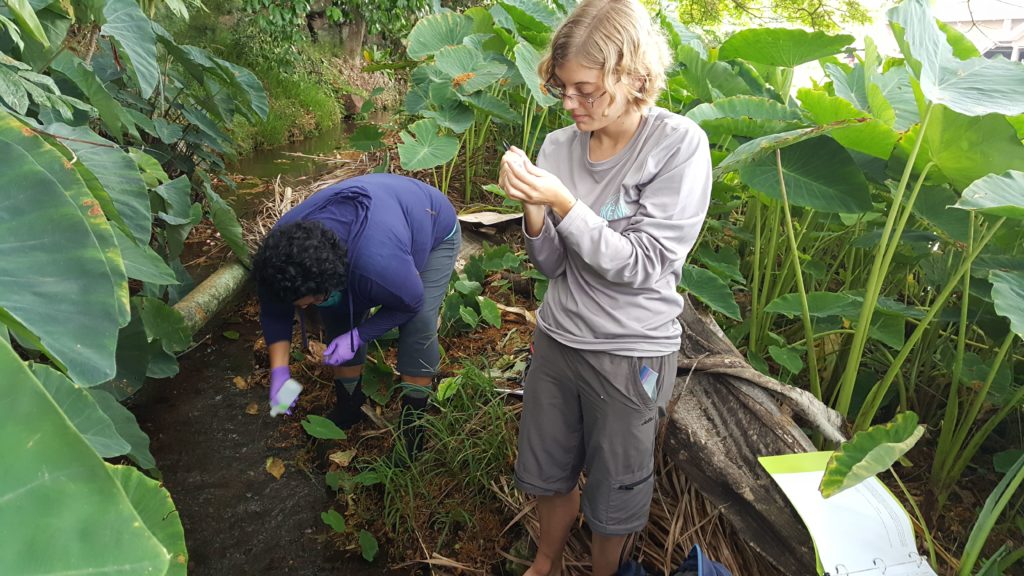
Next the UH Mānoa team worked to collect monthly water samples from spring locations across the farm—mauka (mountain), middle, and makai (ocean). Earth Sciences Professor Henrietta Dulai tested samples for the presence of chemicals that pass through the human body into cesspools, including estrogen and caffeine—that surprisingly, were below detection limits. Usually, agricultural chemicals from the plantation era tend to linger for decades, including the pesticides atrazine and DDT—however, they too were below detection limits, indicating that Kalauao Spring’s source has been geologically isolated from human pollutants. Dulai also looked for sea level rise-induced saltwater intrusion and found that the makai side of the farm is starting to show trace amounts of salt—a concerning omen for the future.
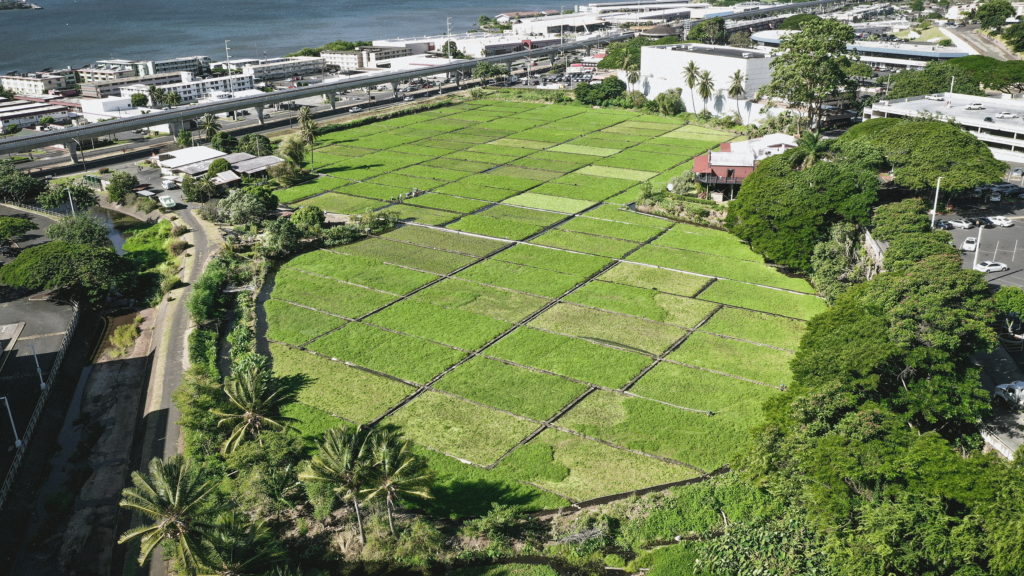
Geographer Leah Bremer of UHERO and the Water Resource Research Center and Department of Urban and Regional Studies graduate student Pi‘ilani Smith interviewed the Sumida family and researched local press to get insight into the resilience of the Sumidas’ watercress farm despite the pressures of urbanization that have made other small farms obsolete around the islands. What did the Sumidas do differently? What is special about Kalauao Spring? How has the community supported and valued this family enterprise such that it is still viable? It turns out that thousands of community members, from school children to senior citizens to celebrity chefs, have been welcomed to Sumida farm over the past several decades…
“…It’s very important to the community, especially the old timers that remember when it was all sugarcane…Yeah, besides the value of the crop, it has the social value, it’s probably more valuable than the crop…” – David Sumida, 2018
“…As we drove to Sumida Farms, Chef Mavro lit up as he told me about the farm which he described as the “most magical place on the island.” If you are a chef who concentrates on local sourcing, then an 86-year-old watercress farm seems like a good choice to give the badge of “most magical…” – Huffington Post, 2017
Institute for Hawaiian Language Research and Translation researcher ‘Ano‘ilani Aga and her students conducted an extensive place name search of the Papakilo newspaper database to better understand the way that the spring and surrounding areas were used and valued in the past, and found more than 500 entries…
“…It was she [Kala‘imanuia] who made Pa‘aiau, Opu, and Kapa‘akea to be fishponds for herself; she also made large kalo terraces in Kalauao to supply herself with food. The land around O‘ahu yielded in abundance through much cultivation [during her time]…” – Samuel Kamakau, 1865
“….Then the group finally reached the waters of Kahuawai in Kalauao, and there they swam for a long time. The visitors felt nothing but admiration for the beauty and the coolness of the swimming pools that belonged to this chiefess …” – William Uaua, 1870
As urban areas expand around the world, there are growing efforts to restore and protect natural and agricultural systems for the services they provide to urban communities, such as crop production, flood prevention and nutrient retention. Team member Sheree Watson, now a Science & Technology Policy Fellow with the American Association for the Advancement of Science, discovered that the Sumidas’ watercress crop provides important water quality protection by removing bioreactive nitrogen, a non-point source pollutant that impacts ecosystem function and threatens human health, as occurs in natural wetlands. In addition, the Millennium Ecosystem Assessment highlights the importance of urban ecosystems to mental health, sense of place, and heritage and aesthetic values in a community. The question is, will these social and cultural values of Sumida Farm allow the farm to persist into the future? Barbara Sumida believes they will.
“We’ve all been really lucky to have managed to get through every disaster that came along, whether it was the diamondback moth or the aster yellows—and now the change in food safety laws,” said Sumida. “We’ve always been optimistic in that way and always thought that we’ll figure it out how to do it. Now the next generation needs to figure out how to do it, because they have a different view that I don’t have…and I think the community would be really mad if this got bulldozed over.”
In an unfortunate and heartbreaking turn of events, Barbara Sumida passed away in February of this year. Although her presence is deeply missed, her spirit and legacy remain strong. Her brother David, now joined by the fourth generation of Sumida farmers, Emi and Kyle, are continuing their partnership with UH Mānoa’s research team. Their goal is to adapt and evolve the farm in response to changing environmental and social needs so they can continue to nourish the islands and serve the community. The Sumida legacy is certainly alive and well, as the family farm continues to sustain its community in more ways than one.
~ This article is dedicated to the memory of Barbara Masae Sumida, July 3, 1954 – February 14, 2020 ~
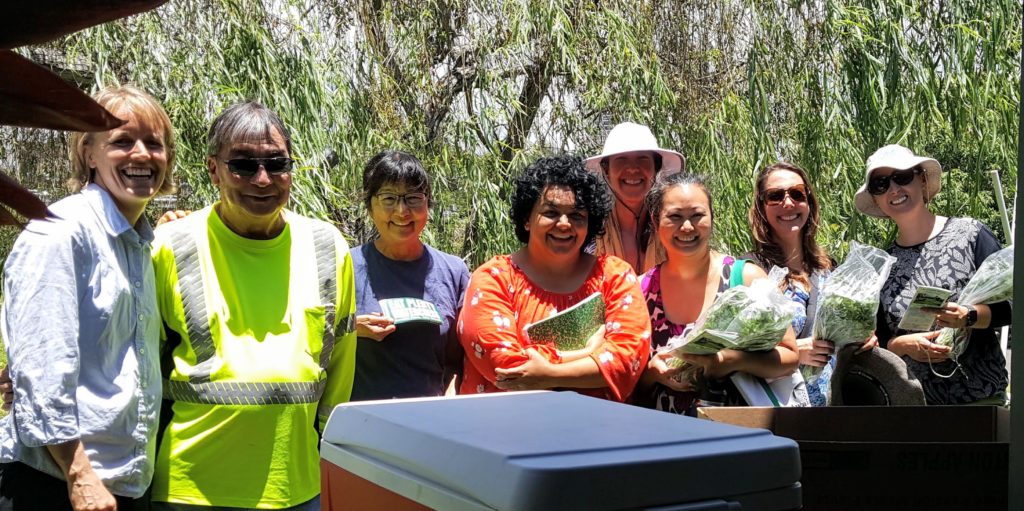
Left to right: Jennifer Engels, David Sumida, Barbara Sumida, Sheree Watson, Kimberly Burnett,
‘Ano‘ilani Aga, Leah Bremer and Henrietta Dulai.
Photo: Deborah Southern

